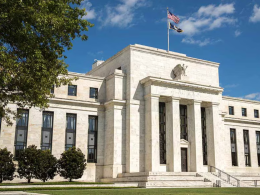by Melissa Duller, Wells Fargo Asset Management
Today we have a joint blog post from Dr. Brian Jacobsen, CFA, CFP® and Melissa Duller, CIMA®
Investors value different attributes at different periods of time. However, most people think of value as it relates to a company’s earnings. From the 1920s through the early 1990s, it was well believed there was a value premium. This means lower-valuation stocks based on price/earnings (P/E) ratio outperformed higher-valuation stocks. In the chart below, note how much money investors would have made buying lower-valued stocks versus higher-valued stocks over the past 15 years.
(Note: P/E ratio is based on the average of analysts’ expectations of a company’s earnings per share over the next 12 months.)
In the past three years, however, this dynamic has changed. In six of the past seven quarters, high P/E stocks have outperformed low P/E stocks. Apparently there hasn’t been much value in value. There appears to be cyclicality—or something akin to fashion fads—to what performs better: low or high P/E. Low P/E stocks outperformed markedly in periods such as 2003–2006, 2009, 2012, and 2013. Looking at rolling two-year performance spreads, low-valuation stocks have underperformed by the widest margin in 10 years.
Underperformance of low P/E stocks isn’t just a phenomenon among U.S. large cap stocks. Hunting for value in low P/E stocks just hasn’t worked, whether you’re looking at U.S. large- or small-cap, value or growth, or in foreign markets.
Since the fourth quarter of 2014, when expensive stocks began outperforming cheap ones, the expansion of the P/E multiple has been much more significant for expensive stocks (quartile 1) and can account for their outperformance. By contrast, cheap stocks have not had an increase in P/E multiples to date.
How much can performance be explained by multiple expansion?
| Since P/Es last troughed (Q4 2011) | Since high P/Es began outperforming (Q4 2014) | |||||
| Change in P/E | Cumulative return | Percent of return resulting from multiple expansion | Change in P/E | Cumulative return | Percent of return resulting from multiple expansion |
|
| Most expensive stocks | 64% | 96% | 66% | 20% | 19% | 103% |
| Cheapest stocks | 55% | 102% | 54% | -5% | 1% | 0% |
| S&P 500 Index | 57% | 113% | 50% | 9% | 15% | 65% |
Sources: FactSet, Zephyr
S&P 500 Index used to create “cheapest stocks” (P/E NTM quartile 4) and “most expensive stocks” (PE NTM quartile 1) groupings.
What investors should remember
Looking for undervalued companies (low P/E stocks) with such attributes as improving fundamentals, strong balance sheets, experienced management teams, and well-positioned products that should exhibit price appreciation hasn’t been rewarded. However, it appears that trend may be changing. It’s early, but in July and thus far in August, lower-valuation stocks outperformed higher-valuation stocks. If history is any guide, when these trends turn, they can turn for a while.
Copyright © Wells Fargo Asset Management



















